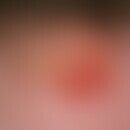Synonym(s)
DefinitionThis section has been translated automatically.
A naturally occurring substance belonging to the group of active substances known as "anticholinergics". Atropine forms colourless crystals, which are sparingly soluble in water, but readily soluble in ethanol, ether, fatty oils. Atropine is a 1:1 mixture of the isomers L-hyoscyamine (naturally occurring in this form) and D-hyoscyamine, which is formed during the preparation process.
OccurrenceThis section has been translated automatically.
Alkaloid in Atropa belladonna and Hyoscyamus niger, among others.
You might also be interested in
EffectsThis section has been translated automatically.
As a parasympathetic agent, atropine inhibits the action of acetylcholine, the main transmitter of the parasympathetic nervous system. The substance inhibits the transmission of excitation at the nerve endings of the parasympathetic nervous system. Atropine cancels the effect of acetylcholine at the target cells of organs and tissues. It causes tachycardia in the heart, leads to dilation of skin vessels and inhibition of smooth muscles of the gastrointestinal tract, bladder, bile ducts and bronchial muscles. Inhibition of the secretory function of salivary and sweat glands; furthermore inhibition of the secretion of bronchial and gastric juice. Mydriasis (pupil refusal) occurs in the eye. At the CNS, atropine leads to motor excitation, as well as to delirium and hallucinations.
Field of application/useThis section has been translated automatically.
Spasmolytic for stomach and intestinal cramps. It is also used in children with enuresis nocturna, smooth muscle cramps and/or hypersecretion in gastrointestinal tract, urinary tract, asthma and bronchitis, Parkinson's disease. Treatment of bradycardia and cardiac rhythm disorders; atropine sulphate eye drops (0.5%/1.0%/2.0%) to dilate the pupil.
DosageThis section has been translated automatically.
EMD: 1.0mg, TMD: 3.0mg.
Undesirable effectsThis section has been translated automatically.
The most common adverse effects of anticholinergics include fatigue, constipation, visual disturbances, dry mouth and urinary retention.
There is individual variation in sensitivity. In overdose, risk of death from respiratory paralysis. Infants and small children are particularly sensitive. The lethal dose is 0,05-02g.
Therapy of poisoning:gastric lavage, activated charcoal (Carbo activatus), in case of convulsions: 10-20mg diazepam i.v.; antidote = physostigmine.
LiteratureThis section has been translated automatically.
Berdai MA et al (2012) Atropa belladonna intoxication:
acase report. Pan Afr Med J 11:72.Glatstein M et al (2014) Seizures caused by ingestion of Atropa belladonna in a homeopathic medicine in a previously well infant: case report and review of the literature. On J Ther 21:e196-8.
Glatstein M et al (2016) Belladonna Alkaloid Intoxication: The 10-Year Experience of a Large Tertiary Care Pediatric Hospital. On Ther 23:e74 77.
Mazzanti G et al (1988)A comparative study of behavioural and autonomic effects of atropine and Atropa belladonna. Pharmacol Res Commun 20 Suppl 5:49-53.
Schilcher H (2016) In: Guide to Phytotherapy, Urban & Fischer Verlag Munich, S. 321 f.







